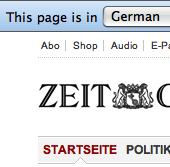The word “Continue” is contextual, so depending on your frame of mind, “Continue” can have many different meanings. During our latest usability study, 3 out of 10 test subjects ran into this button design issue one or more times.
Let’s say you’re running an online bookstore and your visitor is in the state of mind that “I want to complete this purchase now”, then using “Continue” as part of your button text will be read as “continue to the next step in the process”, more specifically, “continue to checkout”. However, if that visitor’s state of mind is “I need to buy two more books”, then “Continue” will be read as “continue shopping”.
The solution is of course fairly straight-forward, simply avoid using contextual words like “continue” in your links and buttons. It may seem like a small thing but never underestimate the importance of copywriting.
Got any tips on copywriting or examples of what to avoid? Let me know by posting a comment.





